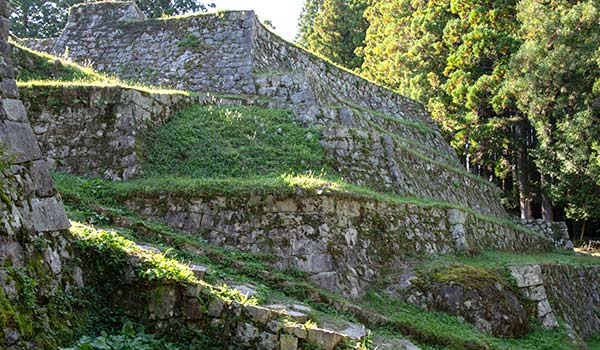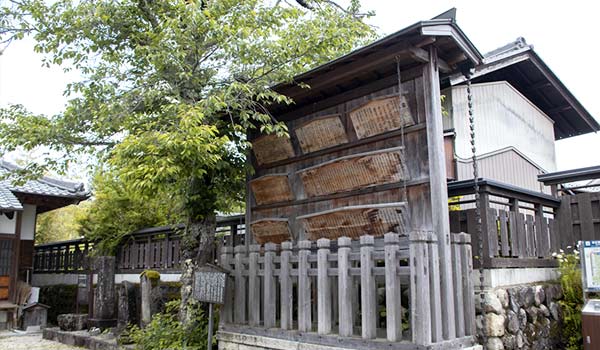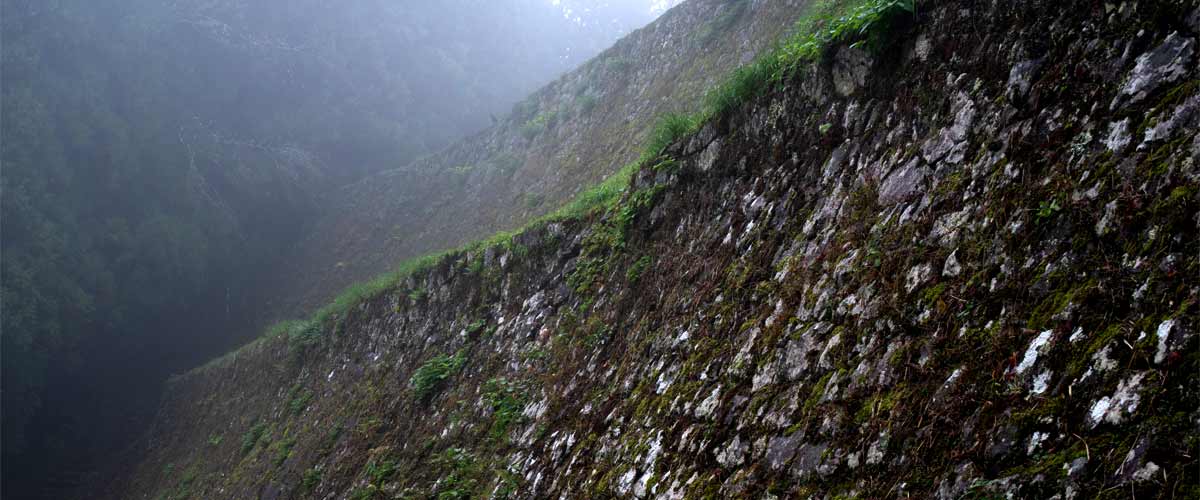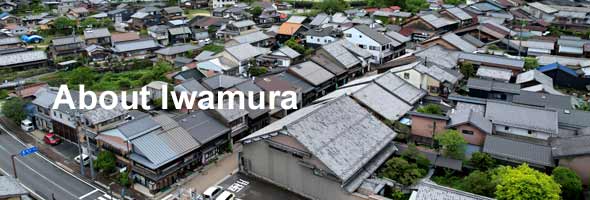History of Iwamura
Kamakura Period (1185-1333)
Kato Kagekado, a senior vassal of Minamoto no Yoritomo, the first Shogun of the Kamakura Shogunate, was entrusted with the governorship of Toyama-no-Sho (present-day Ena and Nakatsugawa City regions). His son, Kagetomo, adopted the Toyama clan name and built Iwamura Castle.

Sengoku (Warring States) Period (1467-1615)
Iwamura Castle was continuously caught up in the Warring States battles of the warlords Takeda Shingen of Kai Province (now Yamanashi Prefecture) and Shinano (Nagano) to the east, Oda Nobunaga, who held Mino (Gifu) and Owari (western Aichi) to the west, and Tokugawa Ieyasu of Mikawa (eastern Aichi) and Totomi (Shizuoka) in the south.
One of the most famous of incidences regards the female castle lord, Oda Nobunaga’s aunt Lady Otsuya. Lady Otsuya took command when her first husband died, and to save the lives of her garrison, agreed to marry the attacker the Takeda general, Akiyama Torashige. As a peace accord, a hostage was sent to the Takeda, the son of Oda Nobunaga who had been adopted by Lady Otsuya. Enraged, Nobunaga then attacked. Telling his aunt all would be forgiven on capitulation, Nobunaga then had Lady Otsuya and Akiyama Torashige promptly and violently executed. Iwamura Castle was then commanded by Mori Ranmaru Nariyoshi, a vassal who was killed along with Oda Nobunaga in the Honno-ji Incident of 1582. Mori Ranmaru’s older brother, Mori Nagayoshi, and then the younger brother, Mori Tadamasa became the lord of Iwamura Castle. Under Tadamasa, extensive renovations transformed Iwamura into a modern castle with magnificent stone walls.

Iwamura Domain, Edo Period (1601-1868)

In 1601, Matsudaira Ienori, a vassal of Shogun Tokugawa Ieyasu, became the first lord of Iwamura Domain, which continued for over 260 years until the end of the Edo period, and into the Meiji Restoration. The last lord, Matsudaira Noritoshi, brought an end to the history of the domain.
Iwamura Castle and Castle Town
Iwamura Castle
Iwamura Castle is considered one of Japan’s Three Great Mountain Castles, along with Takatori Castle (Nara Pref.) and Bitchu Matsuyama Castle (Okayama Pref.). The heavily fortified Iwamura Castle was built at an altitude of 717m, and skillfully uses the steep terrain and 180m elevation difference to improve defenses. Also known as Kiri-ga-jo, or Mist Castle as it is prone to fog, Iwamura is a rare example of a samurai castle that remained in commission for 683 years from 1185 in the Middle Ages to 1868 in the Early Modern period. The magnificent stone walls remaining at the castle ruins are one of the highlights.

Castle Town
Iwamura castle town flourished as the political, economic and cultural center of the Tono region during the Edo period. In the area designated an Important Preservation District for Groups of Traditional Buildings, visitors can see stately lacquered homes, shops and storehouses, as well as town houses and merchant homes with thick pillars and beams, indicating the prosperity of the past.



